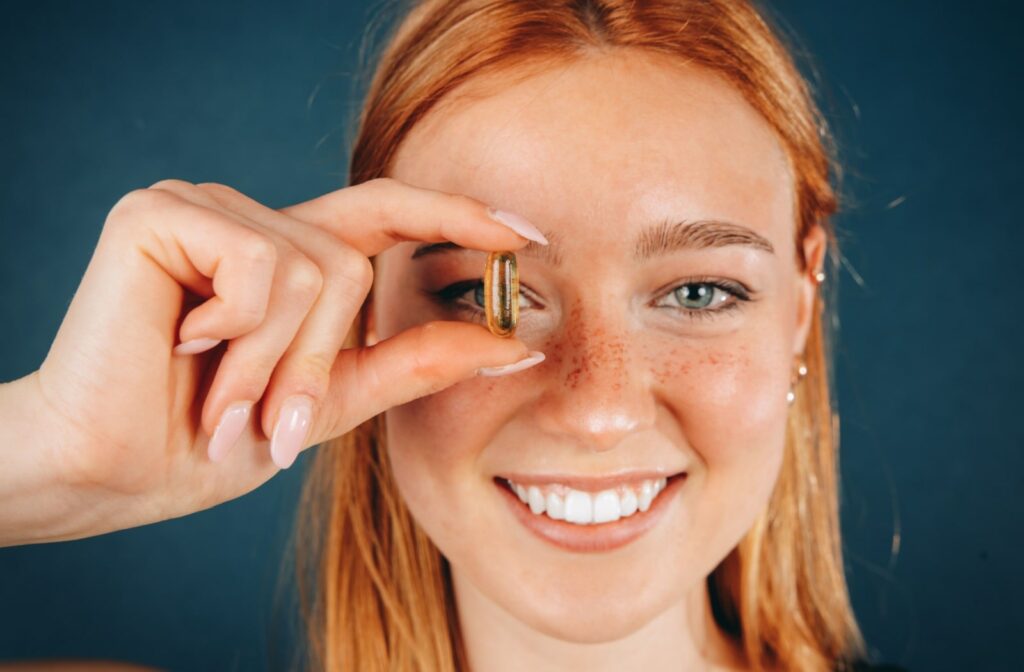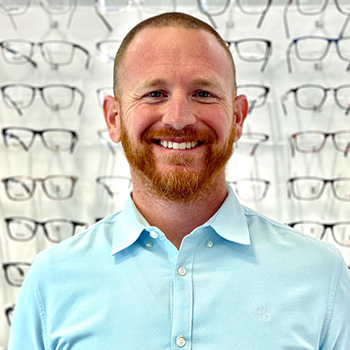Dry eyes. Just the term conjures up images of discomfort and distress. We blink nearly 28,000 times a day, and when your eyelids feel like a desert, it’s time to talk seriously about eye hydration. There are treatments for dry eyes available which can include supplements like omega-3s.
Omega-3 fatty acids, particularly those found in fish oil, have shown promising results for long term relief of dry eyes. If you’re finding your days marred by discomfort, incorporating omega-3 supplements or increasing your intake of omega-3-rich foods, such as salmon, chia seeds, and walnuts, might provide some relief.
Tears 101: The Basics of Eye Lubrication
Tears are an intricate blend of water, oils, mucus, and special proteins that cover the surface of your eyes, keeping them well-lubricated and protected from infection. When this harmony is off, symptoms of dry eyes may arise, signaling that your ocular ecosystem is in distress.
Within the anatomy of the eye, several glands contribute to tear production. The lacrimal glands, positioned above each eye, create the watery (aqueous) layer that keeps our eyes moist and comfortable. When we blink, this layer spreads evenly across the surface of the eye, ensuring protection and hydration.
The meibomian glands in our eyelids secrete oils (lipid layer) that spread on top of the watery tears, preventing them from evaporating too quickly. Finally, cells in the conjunctiva produce mucus (mucin layer) that binds the tears to the eye’s surface. Together, these components create the tear film.
Understanding the root of dry eye syndrome is necessary for finding effective relief. In many cases, the condition is a direct result of an imbalance in the tear film or the tear-production process. This imbalance can lead to tears that evaporate too quickly or fail to adequately coat the surface of the eye.
The Usual Suspects
There are a few factors that can contribute to the likelihood dry eyes, such as:
- Aging eyes
- Digital screen exposure
- Environment
- Underlying health conditions
- Medications
Now that you have an understanding of what can lead to dry eyes, let’s explore some treatments. There are a variety of remedies available, ranging from the conventional to the contemporary. The best place to start is a comprehensive eye exam with an optometrist, who can guide you to treatment options that could work well for you.
Navigating Dry Eye Treatments
Treatment hinges on what led to your dry eyes, and some can take a little bit of time to be effective. Some treatments you might consider for relief could include:
- Artificial Tears: Over-the-counter eye drops designed to mimic your natural tears can provide immediate but temporary relief.
- Prescription Eye Drops: For more severe cases, your eye care professional might prescribe drops that help increase tear production or reduce inflammation.
- Punctal Plugs: A more long-term solution involves a tiny device inserted into the tear ducts to block drainage. This helps keep the moisture on your eyes longer.
- Humidifiers: Adding moisture to the air in your home or office can help prevent your tears from evaporating too quickly.
- Blink More: Being mindful to blink, especially while using digital devices, can help keep your eyes lubricated. Employ the 20-20-20 rule when using digital screens to avoid eye strain and fatigue.
- Warm Compresses & Eyelid Massages: Applying warmth to the eyes and gently massaging the eyelids can stimulate tear production and release oils that improve tear quality. There are in-office treatments available such as LipiFlow.
Every individual’s situation is unique, and what works for one person may not for another. Consulting with an eye care specialist to devise a personalized treatment plan is crucial. They can offer guidance tailored to your specific needs and lifestyle, helping you find effective relief for your dry eyes.
Omega 3 Supplements
These essential fatty acids, particularly found in fish and flaxseed oil, can help improve tear composition and reduce dry eye symptoms. Consuming a diet rich in omega-3s or taking supplements may improve eye health.
Oily fish like salmon, mackerel, and herring are rich in omega-3s, however, not everyone’s palate or lifestyle supports a diet that includes fish. If seafood isn’t for you, you can also find omega-3s in flax seeds, chia seeds, and some tree nuts. Supplements can also be a great alternative to increase your intake of Omega 3’s.
HydroEye is an Omega 3 supplement product specifically designed to aid in eye health. Along with Gama-Linolenic Acid (GLA) and omega-3s, HydroEye includes other nutrients that support eye health, like Vitamin A, Vitamin B6, Vitamin C, and Vitamin E.
Nurturing Dry Eyes in Yorba Linda
In the landscape of eye health, dry eyes can feel like a never-ending challenge. The path to hydrated, comfortable eyes is a journey of understanding, patience, and care for your body’s unique needs. Regular eye exams, healthy lifestyle choices, and minimizing eye strain can help prevent dryness from becoming a chronic problem.
At Dr. Charles Bittel Optometry, we are dedicated to your eye health. Our team is here to offer personalized solutions that cater to your unique needs. Whether you’re exploring the benefits of Omega-3 supplements, seeking specialized treatment, or simply needing advice on daily eye care practices, we are here for you. We invite you to schedule an exam with us today to learn more about our dry eye rejuvenation center.


